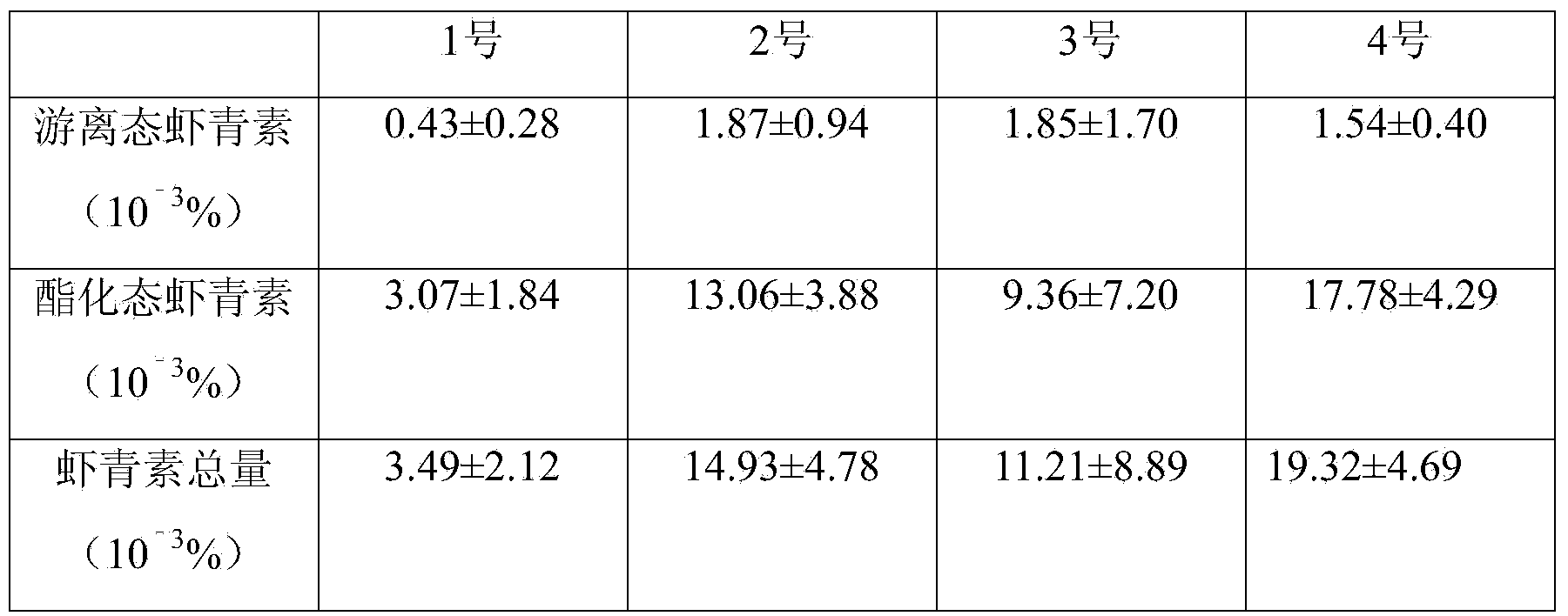Method for improving yield of transgenic tomato containing astaxanthin and content of astaxanthin in transgenic tomato
A technology of transgenic and astaxanthin, applied in the biological field, can solve problems such as no improvement of cultivation measures, and achieve the effects of simple method, high economic benefit and strong operability
- Summary
- Abstract
- Description
- Claims
- Application Information
AI Technical Summary
Problems solved by technology
Method used
Image
Examples
Embodiment 1
[0017] 1. Materials and Methods
[0018] 1.1 Research materials
[0019] Huang Junchao et al. (Huang JC et al., 2013) screened and isolated the ketolase and hydroxylase genes that can catalyze β-carotene and zeaxanthin into astaxanthin from green algae through genetic engineering methods and transferred them into wild-type In the tomato plant (cv.UC82B), the transgenic tomato obtained (has been preserved in the General Microorganism Center of the China Microbiological Culture Collection Management Committee on May 14, 2014, the preservation number is: CGMCC No. 9223, and the classification name is Shrimp Red 1 No. transgenic tomato. The address of the preservation unit is: No. 3, No. 1 Yard, Beichen West Road, Chaoyang District, Beijing; Tel: 010-64807355; Fax: 010-64807288.) Seeds are sown in small pots and transplanted to the ground two months after emergence inside. Under the premise of ensuring that the cultivation measures such as budding, pruning, and pest control are ...
PUM
 Login to View More
Login to View More Abstract
Description
Claims
Application Information
 Login to View More
Login to View More - R&D
- Intellectual Property
- Life Sciences
- Materials
- Tech Scout
- Unparalleled Data Quality
- Higher Quality Content
- 60% Fewer Hallucinations
Browse by: Latest US Patents, China's latest patents, Technical Efficacy Thesaurus, Application Domain, Technology Topic, Popular Technical Reports.
© 2025 PatSnap. All rights reserved.Legal|Privacy policy|Modern Slavery Act Transparency Statement|Sitemap|About US| Contact US: help@patsnap.com

